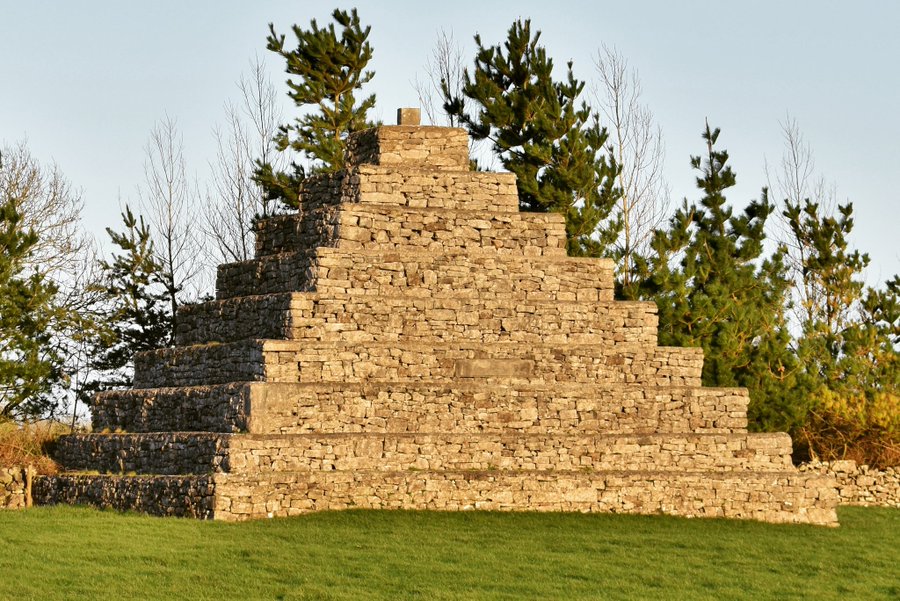Summary
Exploring The Neale’s Ancient Wonder
The Pyramid in the Neale, located in County Mayo, Ireland, stands as a remarkable monument steeped in history. A symbol of heritage and architectural prowess, this pyramid was constructed by local landlord, John Browne, in the 18th century. It is believed that Browne built this structure in honor of his family, giving it a personal significance that transcends time. Its unique appearance amidst the Irish landscape captivates visitors, drawing them into a narrative woven through the land and its past inhabitants. This structure’s tale is not just about its origin, but also about the Neale village’s rich cultural backdrop.
Get your dose of History via Email
Mystery and Significance of The Neale Pyramid
The Pyramid in the Neale’s allure lies in its enigmatic past. Unlike typical pyramids found in Egypt, this Irish rendition elicits curiosity about its unorthodox location and purpose. The structure’s design and antiquity evoke a sense of wonder, with speculations ranging from it being a mausoleum to a symbolic representation of Browne’s fascination with exotic cultures. Historians and tourists alike delve into the narrative of this landmark, seeking to unravel the mystique that surrounds it. Its cultural impact is undeniable, serving as a window to the customs and stories of a bygone era.
Why The Neale Pyramid Captures Imagination
Today, the Pyramid in the Neale captures the imagination of all who visit. It stands as a testament to Ireland’s varied history, encompassing tales of personal legacy and the eternal desire to leave a mark on the landscape. As a visitor attraction, it offers an immersive experience into the country’s historical fabric. For those interested in architecture, ancestry, or simply the charm of Ireland’s countryside, the pyramid provides a unique exploration beyond the typical tourist paths. It ignites curiosity and offers a tangible connection to the life and times of historical figures from Ireland’s past.
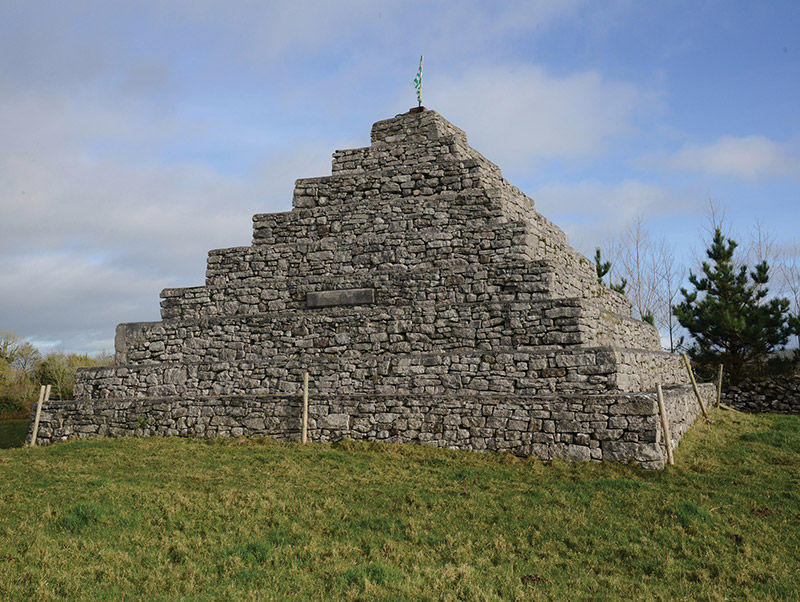
Historical Background of Pyramid in the Neale
The Origins of the Neale’s Pyramid
Located in the verdant surroundings of County Mayo, the Pyramid in the Neale is an Irish enigma. Built in the 18th century, its purpose and provenance are subjects of local lore. Landlord John Browne, who hailed from a prominent family, is often credited with its construction. Browne’s personal flair for grandeur influenced its design, echoing the family’s powerful status. Initially serving as a family tomb, the pyramid has since captivated the community and historians with its presence.
An Unconventional Monument in Ireland
Distinct in its form, the Pyramid in the Neale stands out against the traditional Irish landscape. Such pyramidal structures are rare in this part of the world, as they chiefly recall the grand tombs of ancient Egypt. Still, here lies this Irish equivalent, a testament to the eclectic tastes of the landed gentry of the time. Despite its funerary connections, the pyramid also likely reflects the 18th-century fascination with Egyptian revival architecture—an aesthetic imported and adapted by the Irish nobility.
Social and Historical Impacts
The pyramid’s construction coincided with a historical period rich in transformation and turmoil for Ireland. At the time, social hierarchies were palpable, and monuments like these underscored the divide. However, the Pyramid in the Neale also marks a point of cultural fusion and architectural experimentation. It has become a subject of academic intrigue, shedding light on the nuanced cross-cultural exchanges of its era. Moreover, it signifies the human desire to endure through stone’s silent chronicle.
As time has woven its narrative, the pyramid remains steadfast. The once local landmark has garnered broader attention from cultural enthusiasts and travelers. Its mysterious allure lies in its uncommon form—nestled amidst the lush Irish countryside. The structure continues to prompt questions about the overlap of indigenous customs with external influences.
With each visitor, the Pyramid in the Neale’s history breathes anew. It invites introspection into the lives and legacies of its founders, while presenting a confluence of histories. Unraveling its past enriches our own understanding of Ireland’s rich tapestry of traditions and those who walked its land before us.
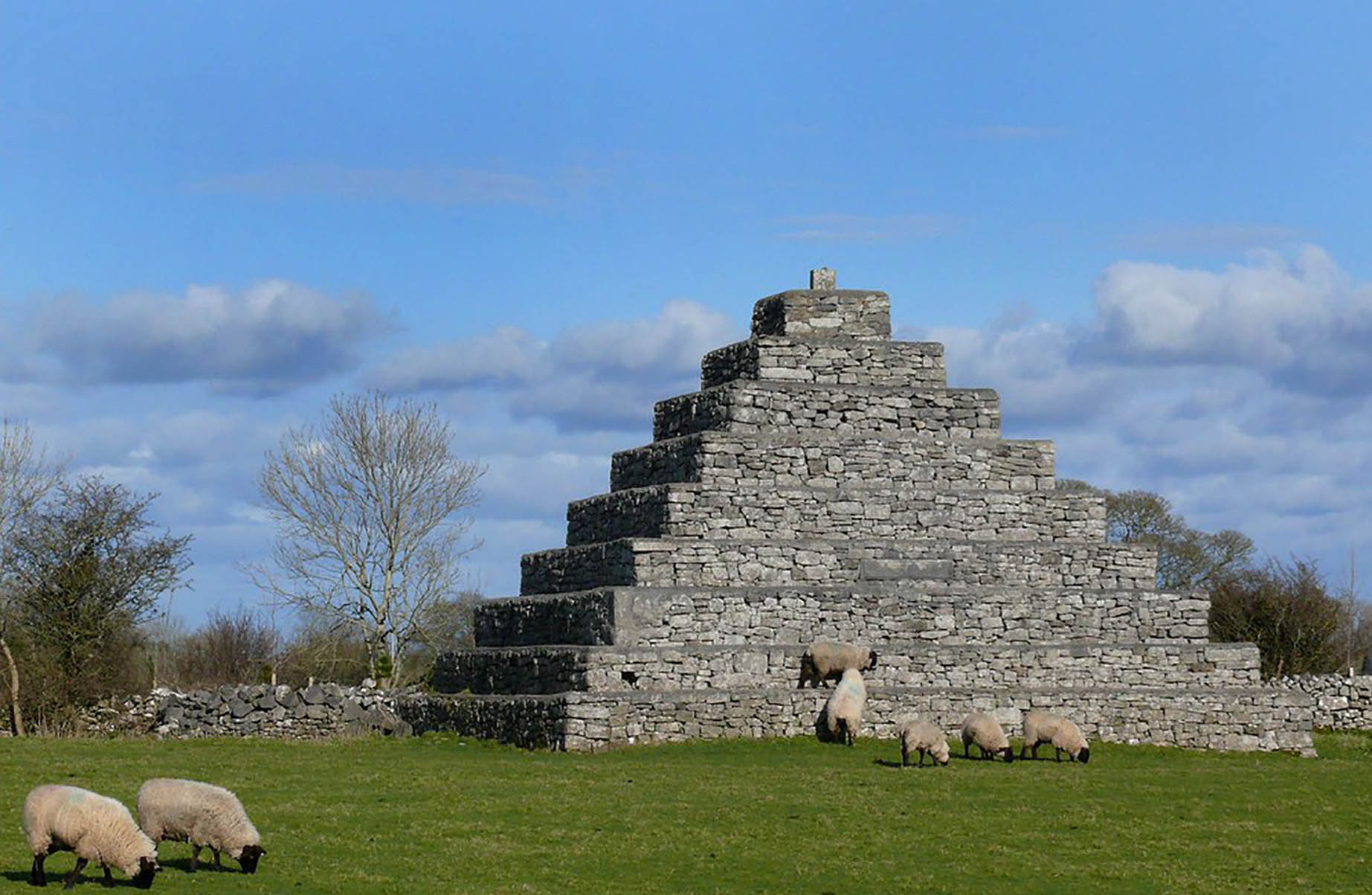
The Discovery of Pyramid in the Neale
Stumbling Upon a Historical Gem
The story of the Pyramid in the Neale’s discovery begins with a happenstance encounter. Local farmers, while working on the land, came across the overgrown and neglected site. This occurred sometime in the early 20th century, sparking interest and intrigue among the community of County Mayo.
Local Historians Take Interest
News of the find quickly piqued the interest of local historians. These individuals embarked on an informal exploration, cutting through the bramble to unveil the majestic structure that lay hidden. They noted its peculiar shape, so out of character for rural Irish landscapes, and began documenting the find.
The Pyramid Enters Public Consciousness
The newfound historical monument grabbed headlines, drawing visitors from near and far. The pyramid’s story was peculiar—a structure akin to Egyptian tombs, sitting in the Irish countryside. A call to preserve the site was made, recognizing its potential significance to Ireland’s cultural heritage.
The Browne family, previously owners of the land, were linked to the pyramid’s origins. This connection shed light on the motivations behind its construction. The site was thought to be a family mausoleum, reflecting the historical period’s fascination with Egyptian architecture and the afterlife.
To this day, the Pyramid in the Neale serves as a subject for research and a point of cultural interest. It stands as a unique historical entity in the collective memory of the Neale and beyond. This site continues to captivate researchers, history buffs, and tourists alike, thanks to its unusual presence and enigmatic origins.
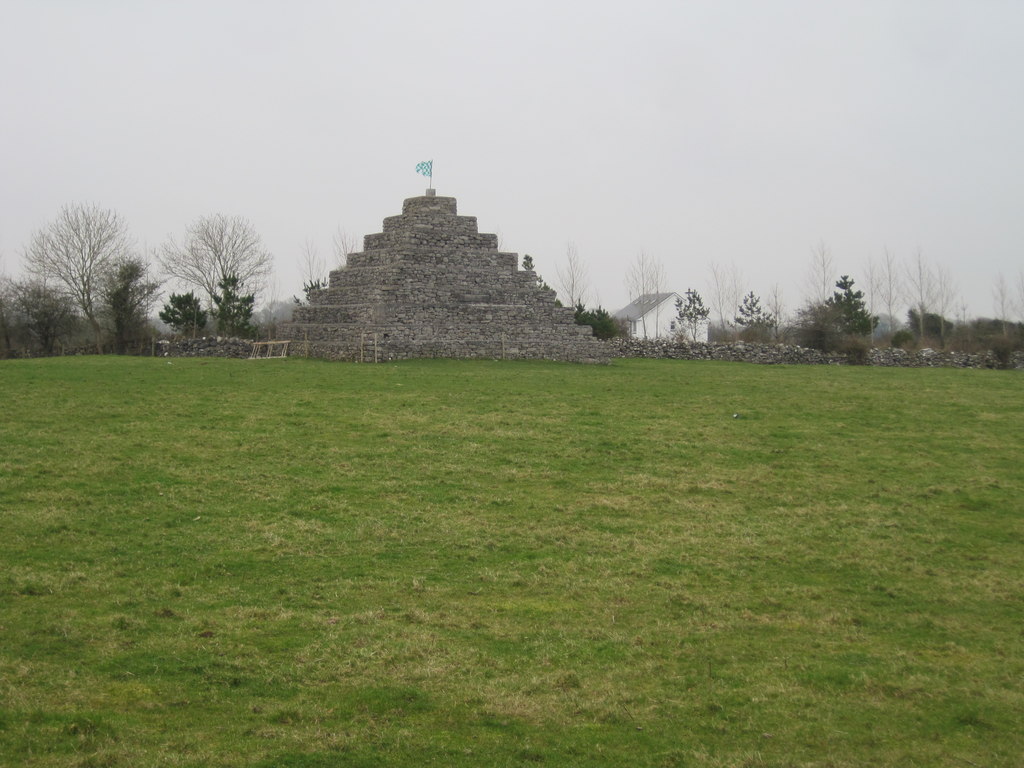
Cultural Significance, Dating methods, Theories and Interpretations
Mark of Prestige in Irish Heritage
The Pyramid in the Neale, though unusual in Irish landscapes, carries significant cultural weight. Created by the notable Browne family, it symbolizes a mark of prestige and wealth in 18th-century Ireland. The structure’s singularity among local heritage sites speaks to the social aspirations of its patrons. It showcases the desire to embody and blend cultural influences—both local and exotic—during a time when such expressions were reserved for the wealthy elite.
Historical Dating of the Pyramid
Dating the Pyramid in the Neale has relied primarily on historical records. Since no scientific dating methods like carbon dating or dendrochronology apply to its stone materials, researchers have scrutinized property documents, wills, and land surveys. These papers have pinpointed the pyramid’s construction to the late 1700s. Further analysis of the Browne family’s timeline has helped corroborate these approximations, adding to the historical understanding of the structure.
Unraveling the Pyramid’s Purpose
Debate surrounds the true purpose of the pyramid, with various theories in play. Some suggest it served as a mausoleum, given the tomb-like interior and inscriptions inside. Others speculate that it may represent John Browne’s fascination with Ancient Egyptian culture, mirroring his broader interest in world heritage. These interpretations help piece together a multifaceted picture of the site’s significance and the motivations behind its construction.
Theories about the pyramid also reflect the broader context of Irish history. Insights into the political and religious climate of the 18th century suggest that the structure could be a manifestation of the period’s complex socio-cultural dynamics. It perhaps embodied a form of resistance or self-assertion against the backdrop of British rule and Catholic persecution in Ireland.
Interpretations of the Pyramid in the Neale continue to evolve as new information comes to light. Each theory contributes to a richer tapestry of understanding this unique monument. It remains an enigmatic piece of Irish heritage, inviting both scholarly inquiry and public fascination.
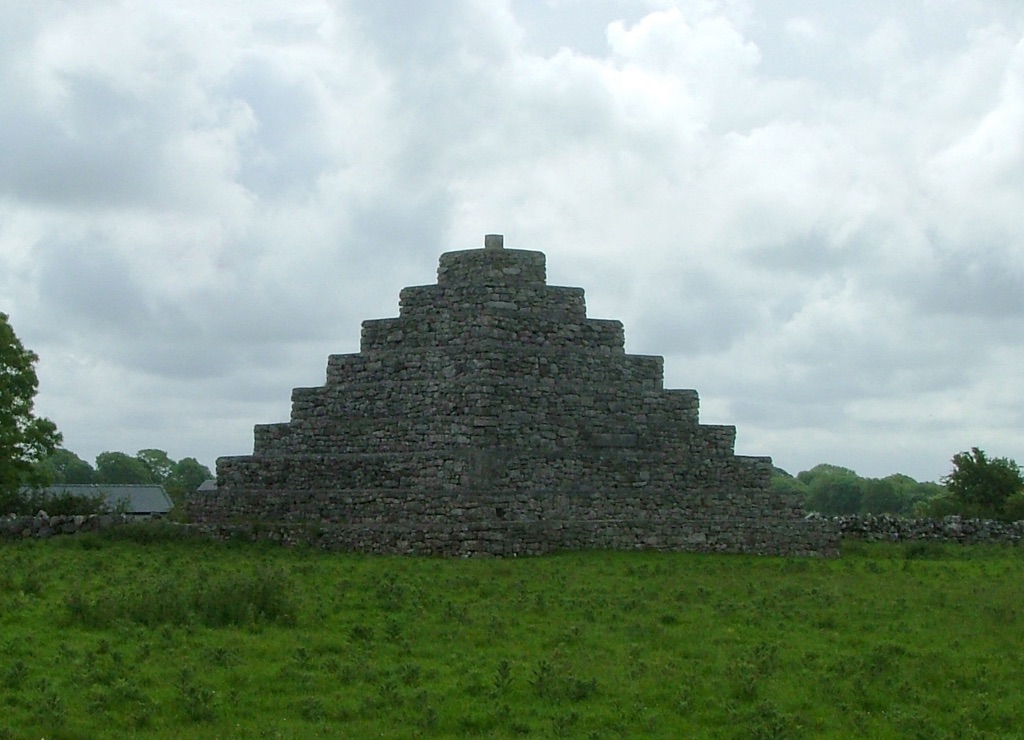
Conclusion and Sources
The Pyramid in the Neale remains a unique element of Ireland’s historical fabric, signifying a confluence of cultural, social, and architectural narratives. Its distinctive form against a backdrop of classical Irish landscapes serves as a symbol of the past landlords’ wealth and desire for longevity. While the site’s origins and functions have been subject to various interpretations, each theory adds depth to our appreciation of this monument. As historical research progresses, the pyramid’s story unfolds further, enriching the understanding of Ireland’s heritage both for locals and the global community.
For further reading and reference on the Pyramid in the Neale and related historical insights, consider the following sources:
O’Conor, K. (1998) ‘The Archaeology of Medieval Rural Settlement in Ireland,’ Discovery Programme Monographs, Dublin.
Edwards, N. (2000) ‘The Archaeology of Early Medieval Ireland,’ Batsford, London.
Stout, M. (1997) ‘The Irish Ringfort,’ Four Courts Press, Dublin.
Valante, M. A. (2001) ‘The Vikings in Ireland: Settlement, Trade, and Urbanization,’ Four Courts Press, Dublin.
Fletcher, R. (1997) ‘Bloodfeud: Murder and Revenge in Anglo-Saxon England,’ Oxford University Press, Oxford.

